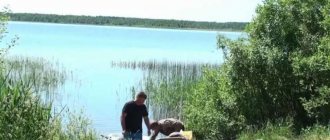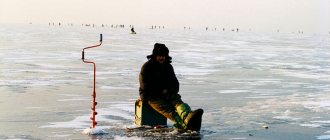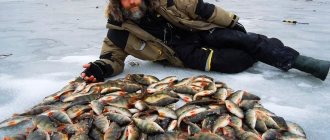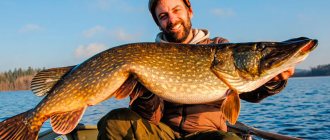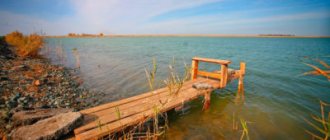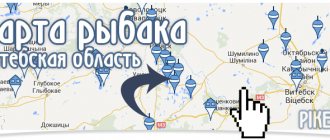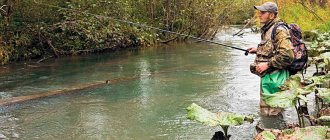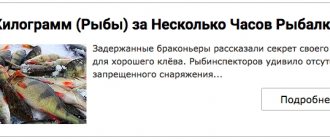Lake Volgo is one of the visiting cards of the Tver region. Every year it is visited not only by local residents, but also by travelers arriving from nearby regions. The lake is located simultaneously in three districts on the Valdai Upland - Selizharovsky, Ostashkovsky and Penovsky. The name of the reservoir reflects its location: along the Volga River. Interestingly, Volgo, with an area of 62 sq. km, is the largest in the Upper Volga lake system and is currently part of the Upper Volga reservoir.
The reservoir consists of two lakes - Small and Big Volgo, connected by a channel near the villages of Bolshoye and Maloye Lokhovo. The lakes are located in two slightly curving arcs, elongated in a general direction from west to east. This structure of the reservoir explains such picturesque bends of the banks, which often attract the attention of vacationers. The average depth of the Volga is small - about 3 m. However, this does not stop tourists who want to relax away from the bustle of the city, go fishing and pitch a tent. In addition, the place is famous for its incredibly beautiful sunsets and old pine forest, which tightly surrounds the lake and protects it from strong winds.
© Marina Serova
Holidays on Lake Volgo
If the purpose of your trip is solitude with nature and escape from civilization, then the best solution would be to have a picnic or even pitch a tent in the northwestern part of the coast, thereby moving away from the areas belonging to tourist centers and surf camps. The picturesque landscapes of this area can make a positive impression on travelers at any time of the year.
However, in summer the lake is especially popular as it is excellent for swimming. The water here warms up by mid-June, and the sandy bottom allows you not to experience discomfort when entering the water. It is also worth noting that Volgo is also suitable for a family holiday: gently sloping shores are often found along the entire perimeter of the lake and provide safe immersion in the water even for the youngest travelers.
Beach near the Chaika tourist center, © Sergey Toropchin
Very often, tourists come to the lake to go boating and kayaking - the panoramic views opening from the middle of the reservoir are truly breathtaking. Fans of a more relaxing holiday will also be satisfied, because the wide coastline makes it easy to find the most suitable place to sit on the sand and sunbathe. And a large number of trees around create spacious shady areas in which you can relax after sunbathing.
An excellent option for spending leisure time on Lake Volgo is to arm yourself with a camera and go explore the local landscapes. The smooth surface of the water, reflecting the setting sun, numerous spruce and pine trees, steep cliffs and sandy beaches continually attract a huge number of professional and amateur photographers from all over the country from year to year.
It is also important to remember that after relaxing on the shore of the lake, all accumulated garbage should be taken with you in order to maintain the cleanliness of such an amazing natural attraction.
Weather on Lake Volgo (at Selishche) - Yandex. Weather
© Vasek Dubonosov
Lake Volgo Tver region
If you pass the city of Ostashkov and on the road to Rzhev turn aside near the village of Sorokino, then very soon you can find yourself at this most picturesque Russian lake. From its fabulous shores all the beauties of the Valdai Hills open up to your eyes.
In comparison with the majestic Seliger, the Volgo undoubtedly has an undeniable advantage: due to the absence of large areas of reeds, it is possible to fish from the shore almost anywhere. Therefore, during the open water season, it is absolutely not necessary to burden yourself with a rubber boat on a trip to the Volgo.
Fishing on Lake Volgo
This lake is surrounded on all sides by dense forest. The regional center of the green paradise is called Selizharovo. In fact, Lake Volgo is the Volga River itself, dammed by a dam above the city and stretching along flooded ravines for tens of kilometers.
The forests around Volgo are a real storehouse of natural gifts. You won’t be able to drag lovers of berries and mushrooms out of there by the ears during the season. And with the opening of the hunting season, a whole army of people armed with double-barreled guns rushes into the vicinity of the lake. But the most important thing here, of course, is fishing.
Fishing on the Volgo is simply fantastic. From the end of October until the end of the freeze-up, burbot bites well here on regular baits.
You don’t have to stand on ceremony with the bait, since the burbot in the Volgo doesn’t care at all whether you treat it with a whole roach or just a cut from it.
Moreover, often the largest representatives of the cod fish family are caught even on chopped pieces of small fish. How delicious their liver is!
Pike, pike perch, bream, roach - all these fish are constantly present in catches on the Volga.
With bream, unfortunately, things will never get better: this fish has not yet recovered from the tapeworm, although it bites just perfectly, especially at depths of 4 to 5 meters. (By the way, these are the usual average depths of Lake Volgo.
) Every bream caught has to be checked and gutted. But recently, healthy specimens have begun to appear more and more often. Looks like things are getting better.
It is often possible to catch quite decent pike perch using mugs. The best live bait in the fall will be roach, which can be easily caught at a depth of 1.5–2 m somewhere near the shore. Imported crucian carp is also suitable. It lasts for a long time in kana. In addition to the above-mentioned fish, pike will also gobble up perch with appetite; in the Volga, octopuses scurry around in flocks near the algae.
Lake Volgo Tver region recreation center Chaika
When our company comes to Volgo, we usually stay at the Chaika base. Quite a decent base - two-story, made of brick, with a hotel, kitchen, heating, amenities - you can live. There is no need to take the dishes with you. The local administration treats our brother fisherman quite carefully. From the base to the lake it is just a few minutes walk.
Where to fish on Lake Volgo
In the shallow grassy bays of the Volgo, hordes of toothy predators hide in the thickets. But you also need to be able to catch pike, perch or pike perch even in such a fertile place for them. Much depends on knowledge of the specific habitats of the toothed ones.
Therefore, do not be shy if you are on this lake for the first time. Ask local fishermen about this; they are friendly people and will be happy to suggest fishing spots.
Most likely, you will be advised to go to the Verkhnevolzhskaya dam itself, where a whole squadron of predators gathers for the huge amount of fry dumped along with the water.
Fishing
Lake Volgo is one of the most popular fishing spots in the Tver region. For a long time it was considered a bream fishery, but currently it is home to a large variety of fish. Particularly common, according to local fishermen, are pike perch and pike. Asp also bite, but much less frequently, and in winter you can even catch burbot if you choose the right place. Large-sized individuals are not uncommon in the waters of Lake Volgo. Pike perch often reaches 6–7 kg, and the weight of especially pike can be 8 kg. It is worth noting that the reservoir is considered shallow, so the water in it warms up quite quickly. Before spawning, the fish are found in shallow water, and then move into the depths of the lake.
Due to the impressive size of the lake, fishermen arriving for the first time often cannot decide on the place and method of fishing, so we recommend that you study the main most fishing areas of the reservoir in advance. These include the stretch, stretching for 7 km from the island of Bely Plav to the village of Selishche. The depth in this area is monotonous and rarely exceeds 6.5 m. But despite this, a wide variety of fish bite here. It is easiest to catch medium-sized roach; individuals reach approximately 20 cm in length. Large bream also bite from the shore.
© Yuri Puchkov
The mouth of the Studenets stream, which is located to the right of the pier on the wild beach of the Chaika camp site, is also a fairly catchy place. In the summer heat, you can catch four to five bream weighing about 1.5 kg in a row. Pike perch and pike are easiest to find in those parts of the lake where the depth is greater than average. For example, on the right bank opposite the “Chaika” between the village of Bor Volgo and a sandy cliff, and also just above the village of Bor Volgo. Pike perch almost always bites there, since the depth starts almost from the very shore. The area between the village of Zavirye and the island of Bely Plav is also interesting, since representatives of the entire ichthyofauna of the lake are found there.
All fish in Lake Volgo are caught mainly with worms. According to the recommendations of experienced fishermen, it is better to use a golden-colored twister and a jig with a worm as gear.
Lake Volgo on the fishermen's forum
© Marina Serova
Geographical information
Volgo is the largest in the system of Upper Volga lakes on the Valdai Upland, the fourth and last of the group of lakes through which the upper reaches of the Volga River passes. Regulated by the Upper Volga Beishlot.
Lake Volgo consists of two lakes - Small and Big Volgo, or Volgo-I and Volgo-II, connected by a channel near the villages of Bolshoye and Maloe Lokhovo. The lakes are located in two slightly curving arcs, elongated in a general direction from west to east for 40 km, the width of the lakes is up to 4 km, the average depth is 2 m, the maximum is 9 m, the water surface area of the lakes is 61 km².
The shores of the lake are predominantly sandy and covered with pine forests. The southern shores are elevated; in some places there are limestone outcrops. Springs often emerge from under the limestones, the temperature of which is about 6 °C throughout the year. The northern shores are low-lying, cut through by shallow bays overgrown with grass and algae, and often flooded during floods. In the northern part of Lake Volgo-II there are two fairly large bays, and in the center rises the forested island of Bely Plav. The bottom of both lakes is sandy and pebble, and muddy in places.
The lake is fed by snow and rain, with a noticeable proportion of groundwater. The maximum level is observed after the beginning of the spring flood. The water level can fluctuate significantly depending on the beishlot regime.
The main tributaries are the Zhukopa River, as well as the Plotichenka, Lemenka, Bolshaya Dubenka, and Kocha. The Volga River flows through the lake.
There are many settlements on the shore of Lake Volgo-I.
Recreation centers
If you prefer a more civilized holiday, we recommend using the services provided by tourist centers. One of the most popular is the Chaika recreation center. Here you can rent a hotel room, a summer house, or even an entire cottage. The complex also has a dining room, a Russian bathhouse, a bar, a shop, a sauna and a swimming pool. In the evenings there are discos, and during the day boats, catamarans, sports equipment and bicycles are available for rent. For all sports lovers, the camp site is equipped with football, volleyball, basketball and badminton courts, as well as a tennis court. In addition, a pleasant bonus is the opportunity to sign up for a sightseeing tour around Lake Volgo.
On the opposite bank from the “Chaika”, the boarding house “Zaruchevye” is located next to the village of the same name. Entertainment is provided here all year round. In winter, snowmobiles , cross-country skis, skates and sleds are available for rent, and in summer you can ride boats, speedboats and jet skis. At any time of the year, vacationers can take advantage of therapeutic and relaxation massage services, as well as sign up for excursions.
© Marina Serova
Near the village of Selishche there is another recreation center called “Cool Beach”. Travelers can stay in both shared houses and individual cottages. On the territory of the base there are cozy gazebos where you can light a barbecue, as well as a Russian bathhouse, a private beach and a banquet hall. Tourists who have been here note that all the houses are very modern and equipped with everything necessary for a comfortable stay. In addition, Klevy Bereg often holds various fishing championships.
[td]Home page| Lake Volgo | Volga river |
Lake "Volgo"
| Somewhat to the west of Lake Seliger, filling a huge furrow with clusters of boulders scattered here and there left by the Great Glacier, the necklace of the Upper Volga lakes bent at a right angle from north to east. Actually, this is the very beginning of our long-suffering Russian Volga. There are four main lakes included in this cascade: Sterzh, Vselug, Peno and Volgo, not counting the many large and small reservoirs scattered around the area, connected to the named rivers and channels. |
The largest of this group is Lake Volgo. The uniqueness of this lake lies in its two-dimensionality (Small and Big Volgo) - this is firstly, and secondly, the Volga itself flows from it with a dam-beishlot located at the end of the lake (more on this below).
According to reliable sources, the Small Volgo is heavily snagged and filled with large bream and pike. The banks are impassable. Perhaps one of the most interesting and beautiful places is the so-called. “pipe” is a body of water connecting two parts of the lake. Volgo. Depths with very sharp changes - from 2 to 8 meters. A fairly wide and very fishy river flows into it - Lemenka. In the recent past, the cape at the confluence was the end point of the fish, mushroom and berry harvesting expedition of tourists from the Chaika recreation center located on the lake. Piles of the old bridge, canyon-like underwater cliffs, shores overgrown with pure forest. Once in the main lake Volgo, the view dissolves in the vast expanse of water - to the end of the lake it is about 20 km with a width of 3-5 km. More monotonous depths of 3-5 m begin, with individual huge snag holes of 8-9 m each. The shores are a continuous resort, pure pine, sand, in general, complete compensation for the sovereign Baltic states. In the last third of the lake there is the island of Bely Plav, very beautiful, overgrown with forest. A large sand spit runs away from it, on the slopes of which it is easy to find perches, around there are thickets of reeds, uruti, arrowhead, etc., but there is no need to say what kind of fauna is in the said flora. On both sides of the island-village: Zavirye, which is considered a fishing village, and Bor Volgo. And Zavirye is considered a fishing zone because right behind the island there is a huge wintering pit with large pike perch, not even a pit, but some kind of pocket of fish and an echo sounder, if there is one, does not have time to count the fish.
| From the island, almost to the end of the lake, a long and wide reach stretches, with a smoothly descending bottom to the channel, where it is 6-6.5 m deep and the bottom is sandy and silty without sharp changes across almost the entire width of the lake. The riverbed (approximately the middle) is the habitat of bream. In all directions from it to the shores, one can hope for a real encounter with pike perch, of which there are a lot here, especially in recent years, after the cessation of gang trawling. The main search for pike perch is best done with a track equipped with 2 baits, on separate leashes, for example: a twister spoon, a twister - a heavy jig with a worm (7-10 pieces), a spinner jig. There is no point in describing the details of such fishing further, because the classic follows - catch a pike perch, buoy overboard and throw a spinning rod equipped with what it bites on. With the exception of some especially doomed days, |
the predator is in constant motion and it is difficult to find its parking place, so success lies in moving, but it is very easy to find a place for a person to park - all around is dry, sand and the same pine, and in some places birch and fir trees. To the left along the stream there is a stone pier, built unknown when.
On the opposite bank, at the mouth of the confluence of the Bolshaya Dubenka River, there is an extensive shoal with snags, bushes, thickets and, of course, fish. The fish here is supplemented with ide, which is not as abundant as bream, but it also responds to bait and fish up to 3 kg are often caught. Further, further down the lake there will be more of it, and I will stop there, but on my own behalf I will add that the fish in the lake is very clean, alive and at times very large. Pike perch up to 10 kg, pike up to 9.2 kg
At the very end of the lake, as its crown, is the large village of Selishche, from which the real Volga actually begins, but up to the beishlot (this is a platinum with lifting flaps), although it has a current, it is of some kind of lake type. Here, along the banks of the Volga, the forest is sparse, with wide meadows, the river has depth differences, which are indicated by the buoys of local fishermen. By the way, under the bridge near Selishchi you can catch ide in the wire with the crumb of black bread and roach with greens. So, sailing down the lake we get to the beishlot, which was built before the war. Like everywhere else, the area before the dam and immediately behind it are very beautiful and fishy places, especially since in the rapids behind the beyslot all the fish are caught, including asp, perch, and occasionally grayling. There is a forest all around, there are not many people, but there are plenty of mushrooms and berries, and right next to the dam there is some kind of mecca of boletus mushrooms, so you won’t understand what else, moss or mushrooms, and on old pillboxes (from the time of the war) you can look for boletus mushrooms. At this point, based on the volume of material, the descriptive part of the journey can be completed, because from the beishlot “one’s own, different distance” begins.
| What are the good things about the places described? Yes, because they are mostly passable for people with cars and at the same time there are a lot of untouched places. Surprisingly, in these places, unlike Seliger, you will not meet scoundrels with electric fishing rods. Apparently this is explained, unfortunately, not by the consciousness of people, but by the inaccessibility of using this rubbish in large water areas. They also stopped trawling lakes, which disturbed the ecosystem. It (that is, the amphibious trawl) was even set on fire a couple of times in the village of Khvoshnino, on Vseluga. |
indignant local fishermen, who, in the old fashioned way, quite actively use fixed nets, often under licenses. The main bait for all types of fish is a worm, and given the difficulty of obtaining it in places remote from populated areas, you can do without any frills; any will do. If you plan not to “cling” to the base, it is better to take it with you and store it in moss. Well, if you relax on the “Chaika”, then there will be no problems, there is a farmyard nearby with no drains into the lake. The bait is also without bells and whistles, what you have is good enough. There really is any kind of tackle, although I personally noticed that lately pike perch has been giving preference to a golden-colored twister and a jig with a worm at a time when the sun clings to the trees at sunset and a yellow “shaker” during the day, and given the smooth, clean bottom, mugs will be indispensable , fortunately, the live bait roach stands like a wall along the banks.
If you want to catch perch or pike, it is better to do it at depths of 1-3 m, although pike at such depths are rarely larger than a kilogram, but since the shores are quite indented by extensive snags with a depth of 1.5-2 meters, then this is where You can indulge your soul in a spinning rod with a small unloaded spinner or a floating wobbler-component. This is in the summer, and in winter there is mainly lure fishing here due to problems with bloodworms among local residents and, by the way, fishing for “white” fish with dough is actively practiced. We deliberately did not dwell in great detail on float fishing only because catching bream in the lake does not, in general, present any problems, the main thing is to have a worm, bait and ropes for anchors, and the boat must be spread out, because... otherwise, during a wave, it will “walk” on the anchor “ends,” which has a negative effect on the shy bream at such a generally shallow depth.
It remains to be warned that in the summer, from time to time, a black-orange cloud appears out of nowhere, which carries over the lenses of the lakes and is accompanied by such a wind that it will not seem like much, so I saw an incomprehensible color of an increasing cloud and a sharp swell on the water - hurry home, unless of course you want to save money on the “powerful rider” simulator and compete with waves a meter high.
Popular reservoirs in the Tver region
On the territory of the Tver region there are many reservoirs that are of interest for fishing. Let's look at them in more detail.
The Rybinsk Reservoir is located on the territory of the Vesyegonsky Municipal District, on the Volga River and is the largest artificial reservoir in the region. Please note that the border between the Tver and Vologda regions runs along the Mologa Bay of the reservoir. Fishing in the Tver region on the Rybinsk Reservoir is possible in open water and from ice. The most popular types of fish for fishing in the Rybinsk Reservoir are roach, bream, perch, pike perch and pike.
The Rybinsk Reservoir is located at coordinates: 58.527751, 37.505741. You can get to the fishing spot by public transport or car. Residents of nearby areas can get here on foot.
The Vazuza reservoir is located in the Zubtsovsky district, on the Vazuza River and is considered a popular place for fishing. Fishing in the Tver region on the Vazuz reservoir is possible in open water and from ice. The most popular types of fish for fishing in the Vazuz reservoir are chub, silver bream, asp, bream, burbot, perch, roach, pike perch, pike and ide.
The Vazuz reservoir is located at coordinates: 56.133561, 34.522394. You can get to the fishing spot by public transport or car. Residents of nearby areas can get here on foot.
The Ivankovskoye Reservoir is located in the Konakovsky district, on the Volga River and is considered a popular place for fishing. Fishing in the Tver region on the Ivankovskoe reservoir is possible in open water and from ice. The most popular types of fish for fishing on the Ivankovskoye Reservoir are silver bream, asp, bream, perch, roach, catfish, pike perch and pike.
Ivankovskoye Reservoir is located at coordinates: 56.657770, 36.508576. You can get to the fishing spot by public transport or car. Residents of nearby areas can get here on foot.
The Uglich reservoir is located within the Kimrsky, Kalyazinsky and Kashinsky districts, on the Volga River and is considered a popular place for fishing. Fishing in the Tver region on the Uglich reservoir is possible in open water and from ice. The most popular types of fish for fishing in the Uglich Reservoir are chub, silver bream, asp, crucian carp, carp (carp), bream, burbot, perch, roach, catfish, pike perch, pike and ide.
The Uglich reservoir is located at coordinates: 57.111788, 37.713077. You can get to the fishing spot by public transport or car. Residents of nearby areas can get here on foot.
The Vyshnevolotsk reservoir is located on the territory of the Vyshnevolotsk urban district and is considered a popular place for fishing. Fishing in the Tver region on the Vyshnevolotsk reservoir is possible in open water and from ice. The most popular types of fish for fishing in the Vyshnevolotsk Reservoir are perch, pike, pike perch, ide, catfish, burbot, bream, chub, crucian carp, roach, rudd and silver bream.
The Vyshnevolotsk reservoir is located at coordinates: 57.555822, 34.474097. You can get to the fishing spot by public transport or car. Residents of nearby areas can get here on foot.
Popular reservoirs in the Tver region
On the territory of the Tver region there are many reservoirs that are of interest for fishing. Let's look at them in more detail.
Rybinsk Reservoir
The Rybinsk Reservoir is located on the territory of the Vesyegonsky Municipal District, on the Volga River and is the largest artificial reservoir in the region. Please note that the border between the Tver and Vologda regions runs along the Mologa Bay of the reservoir. Fishing in the Tver region on the Rybinsk Reservoir is possible in open water and from ice. The most popular types of fish for fishing in the Rybinsk Reservoir are roach, bream, perch, pike perch and pike.
The Rybinsk Reservoir is located at coordinates: 58.527751, 37.505741. You can get to the fishing spot by public transport or car. Residents of nearby areas can get here on foot.
For detailed information about the reservoir, read this material:
Rybinsk Reservoir
Vazuz reservoir
The Vazuza reservoir is located in the Zubtsovsky district, on the Vazuza River and is considered a popular place for fishing. Fishing in the Tver region on the Vazuz reservoir is possible in open water and from ice. The most popular types of fish for fishing in the Vazuz reservoir are chub, silver bream, asp, bream, burbot, perch, roach, pike perch, pike and ide.
The Vazuz reservoir is located at coordinates: 56.133561, 34.522394. You can get to the fishing spot by public transport or car. Residents of nearby areas can get here on foot.
For detailed information about the reservoir, read this material:
Vazuz reservoir
Ivankovskoye Reservoir
The Ivankovskoye Reservoir is located in the Konakovsky district, on the Volga River and is considered a popular place for fishing. Fishing in the Tver region on the Ivankovskoe reservoir is possible in open water and from ice. The most popular types of fish for fishing on the Ivankovskoye Reservoir are silver bream, asp, bream, perch, roach, catfish, pike perch and pike.
Ivankovskoye Reservoir is located at coordinates: 56.657770, 36.508576. You can get to the fishing spot by public transport or car. Residents of nearby areas can get here on foot.
For detailed information about the reservoir, read this material:
Ivankovskoye Reservoir
Uglich Reservoir
The Uglich reservoir is located within the Kimrsky, Kalyazinsky and Kashinsky districts, on the Volga River and is considered a popular place for fishing. Fishing in the Tver region on the Uglich reservoir is possible in open water and from ice. The most popular types of fish for fishing in the Uglich Reservoir are chub, silver bream, asp, crucian carp, carp (carp), bream, burbot, perch, roach, catfish, pike perch, pike and ide.
The Uglich reservoir is located at coordinates: 57.111788, 37.713077. You can get to the fishing spot by public transport or car. Residents of nearby areas can get here on foot.
For detailed information about the reservoir, read this material:
Uglich Reservoir
Vyshnevolotskoye Reservoir
The Vyshnevolotsk reservoir is located on the territory of the Vyshnevolotsk urban district and is considered a popular place for fishing. Fishing in the Tver region on the Vyshnevolotsk reservoir is possible in open water and from ice. The most popular types of fish for fishing in the Vyshnevolotsk Reservoir are perch, pike, pike perch, ide, catfish, burbot, bream, chub, crucian carp, roach, rudd and silver bream.
The Vyshnevolotsk reservoir is located at coordinates: 57.555822, 34.474097. You can get to the fishing spot by public transport or car. Residents of nearby areas can get here on foot.
